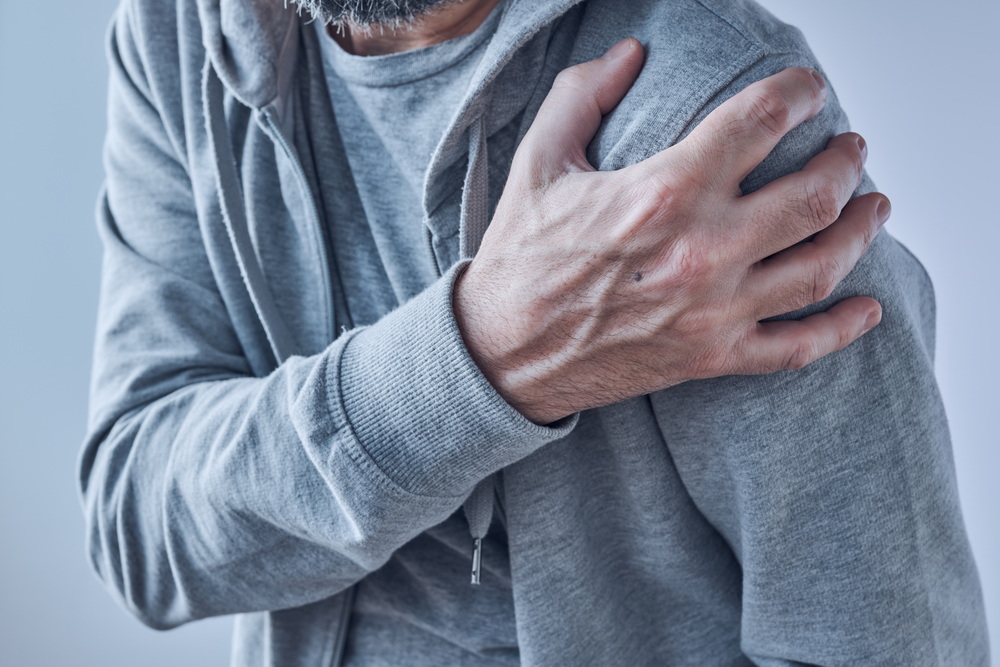
18 Jan Painful Bursitis: More Common as We Get Older
Getting old is tough. It is not for the faint of heart. As we age, our bodies gradually break down and we are forced to deal with things like arthritis and back pain. Unfortunately, painful bursitis also becomes more common as we age. It is a well-known cause of pain in the elbows, hips, and shoulders.
Bursitis is by no means a life-threatening condition, but it can be extremely painful. If bursitis pain is severe enough, it could lead a person to stop using the affected appendage or joint. Over long periods of time, the result could be loss of function, reduced muscle mass, and so on.
So, what is bursitis? And why does it seem to be more common with age?
Bursa Are Fluid-Filled Sacs
The simple definition of bursitis is inflammation of the bursa. Bursae are fluid-filled sacs that help reduce the friction caused by muscles, tendons, and bones moving back and forth. We have bursa sacs all over our bodies, though they are most prominently located around major joints.
In younger people, ligaments and muscles are strong enough to handle repeated stress without much difficulty. The bursae do their job just fine and that’s that. But with age comes loss of tissue mass and subsequent weakness. As ligaments and muscles get weaker, the bursae have to work harder to reduce friction. They sometimes become inflamed due to added stress.
What Causes Bursitis
Bursitis itself is not the result of age. Rather, the physical mechanism behind it is generally some sort of injury. It can be a repetitive stress injury or an acute incident. In either case, the injury causes inflammation that may or may not be limited to the bursae.
In the shoulder, bursitis can be the result of exercise, arthritis, repetitive stress activities, and so forth. One person might develop bursitis after being injured playing basketball. Another might inadvertently injure themself by sleeping at a bad angle.
Unfortunately, some older bursitis patients develop the condition as a result of taking prescription medications. People suffering from rheumatoid arthritis, gout, and other conditions are at a higher risk of developing bursitis due to a combination of their underlying conditions and the medications they take for them.
Treating Bursitis
Bursitis often occurs in the shoulders and elbows. However, it can also occur in the hips, knees, feet, and even the buttocks. Common symptoms include inflammation, stiffness, and redness of the skin. In terms of treating the condition, there are many options.
First and foremost, doctors recommend resting the affected joint. Along with that is ceasing the activity likely to have caused the problem, if it can be identified. Additional treatments include anti-inflammatory medications, ice packs, and medical devices including splints, braces, etc.
Bursitis pain lasting more than a week or two may require more aggressive treatment. From our perspective, chronic pain is better treated with injection therapies designed to block pain signals. Certain types of injection therapies can also minimize inflammation over weeks or months.
Get Relief from Pain
Regardless of where your bursitis presents or its cause, we understand that you want relief from your pain. You need relief. The good news is that Lone Star pain specialists are very familiar with treating bursitis. Our clinic is more than happy to set up an appointment for you to visit.
Rest assured that we will offer a complete diagnosis and then discuss treatment options with you. You ultimately decide the best course of action. Our number one goal is to help alleviate your pain so that you can get back to enjoying life.


No Comments